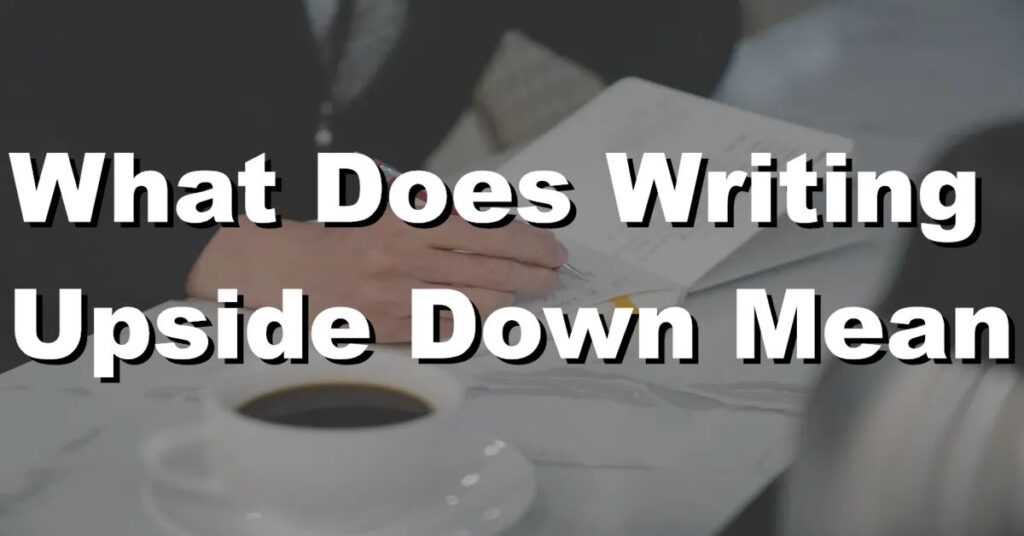Writing is a skill that has been around for centuries and has been used to communicate ideas, stories, and even secrets. However, writing upside down is a unique and creative way to add flair to one’s writing.
This type of writing has intrigued many individuals and has become a popular trend. Writing upside down can be achieved through various techniques, including flipping the paper or turning it around. But what does it really mean to write upside down? Is there a deeper meaning behind it or is it just a fun way to write?
In this blog post, we’ll explore the different aspects of writing upside down, its history, and what it means to write this way. We’ll also look at how writing upside down can be used in creative writing, calligraphy, and other forms of art.
The History of Upside Down Writing
Upside down writing, also known as inverted or reversed writing, has a fascinating history that dates back centuries. Its origins can be traced to ancient civilizations, where scribes and scholars experimented with different writing styles and techniques.
In medieval times, monks used upside down writing as a way to hide secret messages within their manuscripts, adding an element of mystery and complexity. Over the years, upside down writing has been employed in various contexts, from cryptography and secret codes to artistic expression and playful communication.
Why Do People Write Upside Down?
The motivations behind writing upside down can vary. For some, it is a form of self-expression and creativity, allowing them to add a unique twist to their writing. Upside down writing can also serve as a fun and engaging way to capture attention or spark curiosity.
In certain cases, it may be used for practical purposes, such as preventing others from easily deciphering the written content. Additionally, writing upside down can be a personal challenge or a way to test one’s skills and dexterity in manipulating language.
Upside Down Writing in Creative Writing
Upside down writing has found its place in the realm of creative writing. Writers and poets often experiment with unconventional writing techniques to create distinctive effects in their work. Upside down writing can be used as a literary device to convey a sense of disorientation, ambiguity, or a departure from traditional narrative structures.
By flipping words or sentences, writers can add an element of surprise, challenge readers’ expectations, and encourage deeper engagement with the text. It offers a way to break free from conventional writing norms and explore new avenues of creativity.
How to Write Upside Down: Techniques and Tools
Writing upside down may seem daunting at first, but with a bit of practice and the right tools, it becomes more accessible. One technique involves physically rotating your paper or writing surface, allowing you to write in a normal, upright position while the text appears upside down to others.
Another approach is to manually flip each letter or word as you write, carefully constructing the inverted text. Alternatively, there are digital tools and online converters available that can automatically generate upside down text, making the process easier and more efficient. These tools allow you to simply type your desired text and instantly convert it to an upside down format.
Conclusion
Writing upside down may seem like a gimmick or a novelty, but it has a rich history and practical applications. It can be used to create unique calligraphy, add a new dimension to creative writing, and challenge the way we think about writing. Whether you’re a beginner or an expert, writing upside down is a fun and creative way to express yourself.
It requires a bit of patience and practice, but the results can be stunning. So next time you want to add a bit of flair to your writing, why not try writing upside down? Who knows, you may discover a whole new world of writing that you never knew existed.

